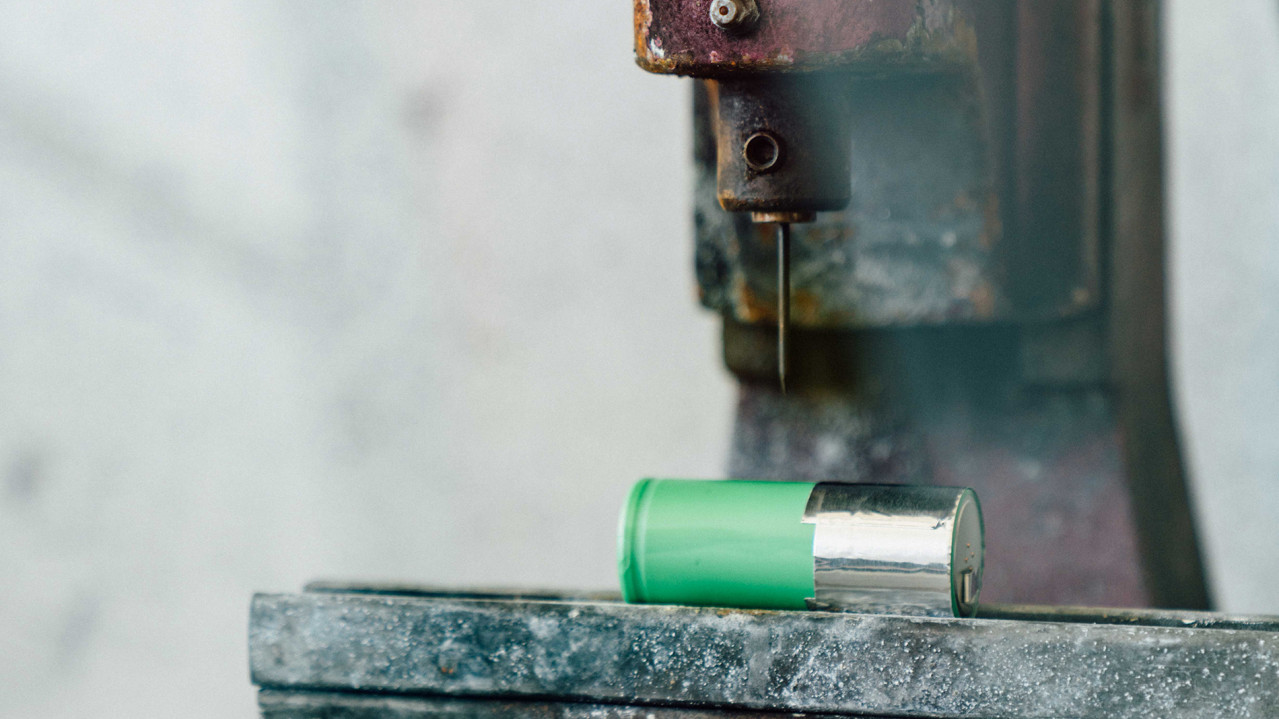
4 reasons for lithium iron phosphate in a battery storage system
At sonnen, we have relied on lithium iron phosphate for our battery storage systems from the very beginning. However, what reasons point towards the use of this technology?
What battery is actually in the sonnenBatterie? Strictly speaking, it is a battery unit, which in turn consists of hundreds of individual battery cells. They are all interconnected and thus large enough to supply a household with stored solar energy for hours.
If you want to know more, you must ask yourself what is actually in the indivudal battery cells. They are lithium-ion batteries, which all well-known manufacturers of battery storage systems use nowadays. Most people know this technology from their mobile phones or laptops. But now, the big difference: within lithium-ion batteries, there are numerous sub-types, some of which differ greatly from each other. This makes sense because every application has different requirements for a battery. A mobile phone battery is certainly exposed to different stresses than a battery for an electric car or battery storage unit.
At sonnen, we have relied on lithium iron phosphate, also known by its abbreviations LiFePO4 or LFP, from the very beginning. This means that one of the two battery electrodes is made of lithium iron phosphate. In most mobile phone batteries, notebooks, or electric vehicles, this electrode is made of a lithium-cobalt mixture such as nickel-manganese-cobalt (NMC) or nickel-cobalt-aluminium (NCA).
But why do we use lithium iron phosphate of all things? Because we are independent of any battery manufacturer and therefore not tied to any particular technology. This allows us to offer our customers the best available battery technology on the market. And in our eyes, that is currently lithium iron phosphate. When selecting the right technology, we proceed according to 4 criteria, which currently exclude all other batteries tested by us in our battery lab.
1. Safety
There is no compromise here because the sonnenBatterie is installed in our customers' homes. Our storage systems are protected against possible faults several times over and exceed all current legal requirements. But that is not enough for us. That is why we do not use battery technology with a very high energy density, such as is used in electric vehicles or mobile phones.
To know how the batteries react in the worst but very unlikely case of an internal short circuit, we also carry out a nail test in our battery laboratory. Only if a battery survives this test and does not explode or burn is it considered. Not many batteries currently on the market can pass this test and are therefore unsuitable for use in battery storage systems in our view.
Especially with the NMC or NCA cells we tested, a simulated short circuit produces very high temperatures of over 700 °C, which can melt the separator and spread to the other cells. What follows is a fire that cannot be extinguished, as the oxygen for combustion is already contained in the battery material and it thus burns even under water.
In our tests, even fully charged lithium iron phosphate batteries did not show a comparable reaction to the NMC or NCA cells used there. They neither burned nor did critical temperatures arise that could melt the separator or spread to other cells. For us, this is a clear decision in favour of lithium iron phosphate batteries.
This is also the conclusion of an independent German study ("Compendium: Li-ion Batteries") by the Association for Electrical, Electronic & Information Technologies (VDE) and the German Commission for Electrical, Electronic & Information Technologies (DKE), funded by the Federal Ministry for Economic Affairs and Energy (BMWi).
When comparing lithium material systems about safety, the study comes to the following conclusion: "In contrast to oxides, lithium iron phosphate (LFP) does not show any thermal effects up to 300 °C. Therefore, the study is based on a comparison of lithium material systems. Among other things, this puts LFP ahead of the competition in terms of safety." And further: "In the event of an accident, oxygen can develop in the case of oxides, with fire consequences. NCA (lithium nickel cobalt aluminium oxide) is particularly critical in this context."
2. Longevity and performance
A battery storage system must perform reliably for many years, only then is it sustainable and economically viable. Here, too, battery technology is decisive.
A battery loses a little of its original capacity with every charge and discharge. This means that it can store less and less energy over time. This process is minimal and drags on for years until it reaches a level commonly referred to as end of life, which often comes quite suddenly. Most people know this from their mobile phone, which after 2 years can hardly hold out for longer conversations despite being fully charged.
Each battery technology takes a different amount of time to reach this point. Compared to home storage like the sonnenBatterie, the mobile phone battery is very short-lived and usually only reaches 300-500 charging cycles. Even NMC battery cells tested by us, which are often used in electric cars, achieve significantly fewer charging cycles. But they don't have to. For the battery of an electric car, 1,000 charging cycles is already a good value. With a range of 300 km per charge, this would correspond to a service life of 300,000 km. Even many petrol-driven vehicles cannot manage that.
For self-consumption with solar power, on the other hand, 1,000 charging cycles would be far from sufficient. In Germany alone, about 250 charging cycles per year are needed to ensure solar self-consumption. After four years, the battery would be exhausted and would have to be replaced.
As a rule, however, such a battery should last 15-20 years. In addition, there are additional applications such as micro-CHP units, which further increase the number of charging cycles.
The lithium iron phosphate batteries in the sonnenBatterie can be charged and discharged more than 10,000 times and keep 80% of their initial capacity. A peak value in the industry. Even after 15,000 cycles, they still contain over 60 % of their capacity. Lithium iron phosphate offers us the robust backbone to enable such applications without a problem.
Here, too, the study sponsored by the BMWi confirms that LFP has up to five times the cycle stability and thus service life of NMC and NCA. This puts the initially higher acquisition costs per kWh of storage capacity into perspective over the lifetime of the battery storage system. According to the study, the relative costs per charging cycle are only 0.09-0.25 €/kWh/cycle, in contrast to the costs of NMC and NCA, which are twice as high.
3. Proven technology
Lithium iron phosphate technology has been around for over 15 years. It initially proved its worth in buses or even submarines. Since its foundation in 2010, sonnen has relied exclusively on lithium iron phosphate and has since sold over 90,000 battery storage units with it. The most important supplier of our batteries is Sony, which launched the first commercial lithium-ion battery in 1991 and has developed its own lithium iron phosphate technology.
4. Environmental compatibility
Lithium iron phosphate is the only battery material whose chemical composition also occurs as a natural mineral. We remember: a battery consists of two electrodes. One of them is made of graphite, while the other is made of a nickel-cobalt mixture or lithium iron phosphate. So, our batteries contain neither cobalt nor nickel, both of which are considered toxic heavy metals. Cobalt is also a potential conflict raw material. Although cobalt used in Europe often comes from Canada or Australia, a large part of the production is also located in the Congo, where the raw material is mined under questionable circumstances.
In this aspect, too, lithium iron phosphate comes off as the best available solution in the BMWi study: "From an ecological point of view, LFP, like LMO, is non-toxic and harmless. Moreover, unlike electrode materials with nickel and cobalt, it is already being used successfully as a potentially low-cost active material."
Conclusion:
Only if battery technology fulfils all these four characteristics do we use it. Therefore, for us, only lithium iron phosphate comes into question.






